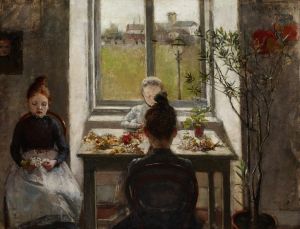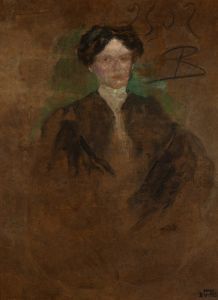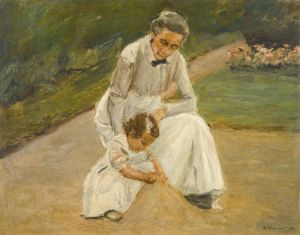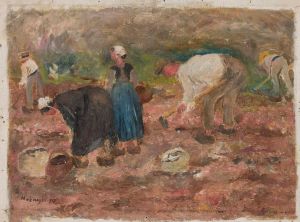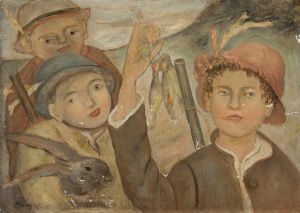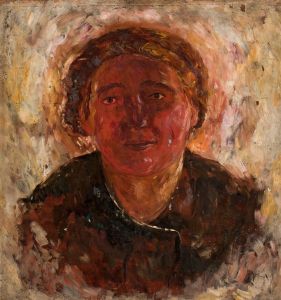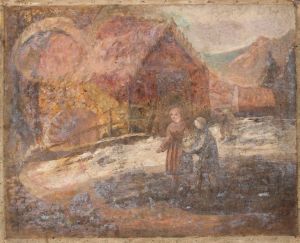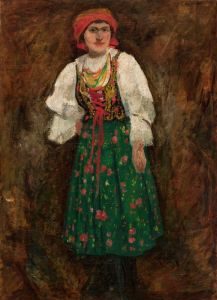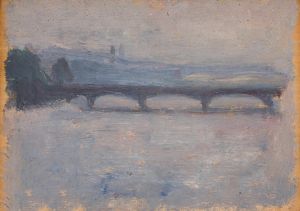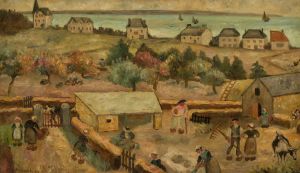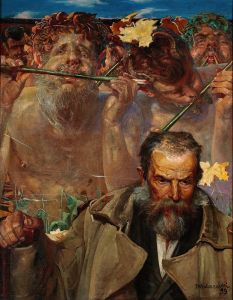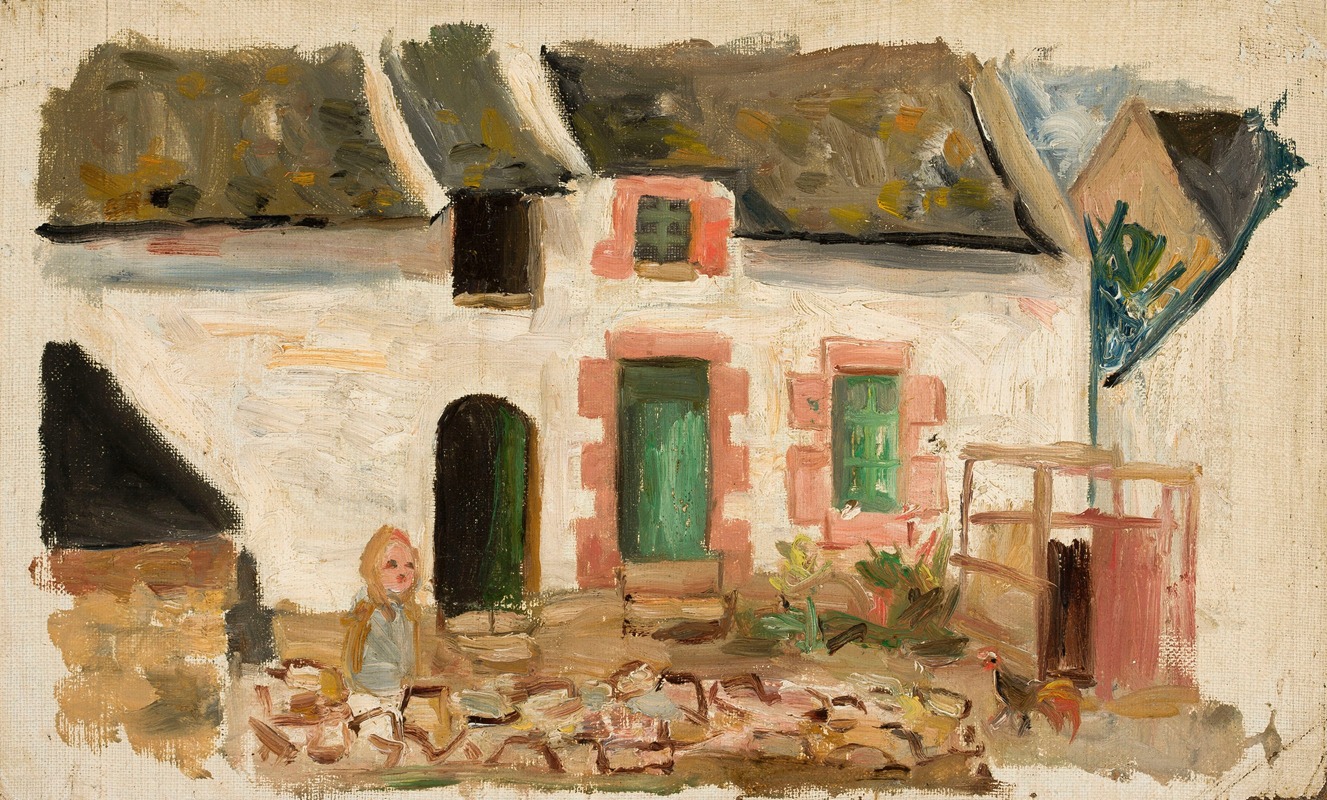
Dziecko przed domem
A hand-painted replica of Tadeusz Makowski’s masterpiece Dziecko przed domem, meticulously crafted by professional artists to capture the true essence of the original. Each piece is created with museum-quality canvas and rare mineral pigments, carefully painted by experienced artists with delicate brushstrokes and rich, layered colors to perfectly recreate the texture of the original artwork. Unlike machine-printed reproductions, this hand-painted version brings the painting to life, infused with the artist’s emotions and skill in every stroke. Whether for personal collection or home decoration, it instantly elevates the artistic atmosphere of any space.
Tadeusz Makowski was a Polish painter known for his unique style that combined elements of folk art, symbolism, and modernism. One of his notable works is "Dziecko przed domem" (translated as "Child in Front of the House"). This painting is a reflection of Makowski's distinctive approach to art, characterized by his use of simple forms and a focus on the innocence and purity of childhood.
"Dziecko przed domem" was created during a period when Makowski was deeply influenced by his experiences in France, where he spent a significant portion of his life. The painting depicts a child standing in front of a house, a common theme in Makowski's work, which often explored the world of children and their environments. His portrayal of children was not just a literal representation but also a symbolic exploration of themes such as innocence, simplicity, and the essence of human nature.
Makowski's style is marked by a blend of geometric forms and a muted color palette, which can be seen in "Dziecko przed domem." The painting's composition is simple yet evocative, capturing the viewer's attention through its subtle use of color and form. The child's figure is rendered with a sense of solidity and presence, while the background elements, such as the house, are depicted with a more abstract and stylized approach. This contrast highlights the central figure and draws the viewer into the scene.
The influence of folk art is evident in Makowski's work, including "Dziecko przed domem." He often incorporated elements of Polish folk traditions into his paintings, which can be seen in the simplified forms and the emphasis on everyday life. This connection to folk art was part of Makowski's broader interest in capturing the essence of Polish culture and identity, even while living abroad.
Makowski's work, including "Dziecko przed domem," is also noted for its emotional depth. Despite the simplicity of the forms, there is a profound sense of emotion and narrative in his paintings. The child in the painting, while depicted in a straightforward manner, conveys a sense of curiosity and contemplation, inviting the viewer to ponder the child's thoughts and experiences.
Throughout his career, Makowski remained committed to exploring the themes of childhood and simplicity. His work has been celebrated for its ability to convey complex emotions and ideas through minimalistic and often whimsical imagery. "Dziecko przed domem" is a testament to Makowski's skill in capturing the universal qualities of childhood and the human experience.
Today, Tadeusz Makowski is regarded as one of Poland's most important modernist painters. His work continues to be studied and appreciated for its unique blend of folk art influences, modernist techniques, and deep emotional resonance. "Dziecko przed domem" remains an exemplary piece within his oeuvre, showcasing his ability to merge simplicity with profound meaning.






